What Is Propaganda
September 4, 2023•1,358 words
What is propaganda?
What is propaganda?
This was originally posted on my Medium page but I wanted it to live here as well.
What is propaganda?
How you can learn to identify lies and defend yourself.
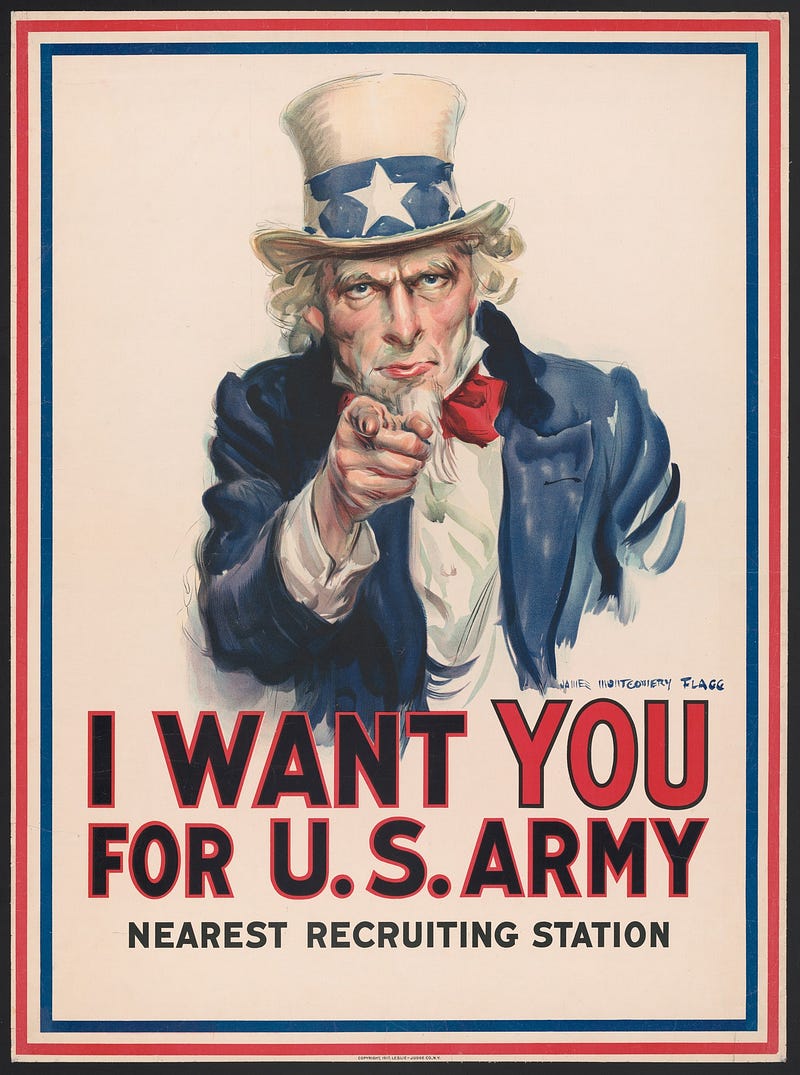
Photo by
Library of Congress on Unsplash
We hear a lot about propaganda and we think we understand what it is but there are many aspects to it that have a direct impact on our lives so it is important to gain a better understanding of it.
Dictionary.com defines propaganda as, “information, ideas, or rumors deliberately spread widely to help or harm a person, group, movement, institution, nation, etc…”

Edward Bernays, who wrote a book titled Propaganda, wrote in his earlier work Crystalizing Public Opinion, “the only difference between ‘propaganda’ and ‘education’ really, is the point of view. The advocacy of what we believe in is education. The advocacy of what we don’t believe in is propaganda. Each of these nouns carries with it social and moral implications.”
Eric Hoffer wrote in The True Believer, “The truth seems to be that propaganda on its own cannot force its way into unwilling minds; neither can it inculcate something wholly new; no can it keep people persuaded once they have ceased to believe. It penetrates only into minds already open, and rather than instill opinion it articulates and justifies opinions already present in its recipients.”
When looking at what is propaganda and how to deal with it we need to keep in mind that people will have different views on what may or may not be propaganda. Also, just as an advertisement will have a different impact on different viewers. Many of the people spreading propaganda online are doing so as it validates their worldview.
Propaganda can be broken down into white, black, and gray propaganda.
- White propaganda comes from an identified source and the message will usually be accurate. Government efforts to rally citizens behind a war effort would be white propaganda.
- Black propaganda is used to spread completely false information and the source is kept secret or is fabricated.
- Gray propaganda as you would guess falls in the middle area between white and black. The information may be sourced and the accuracy is not verified.
Propaganda can include a wide range of items with different levels of credibility and purpose.
The Institute for Propaganda Analysis (IPA) was an organization in the United States started in the late 1930s that was trying to educate the public about how to identify propaganda. They published several guides to understanding propaganda and encouraged people to form groups to discuss and learn more.
In the book, The Fine Art of Propaganda, they outline the seven ABC’s of propaganda analysis.
- Ascertain the conflict element in the propaganda you are analyzing. All propaganda contains a conflict element in some form.
- Behold your own reaction to this conflict element. It is important to take into consideration our own opinions with regard to a situation that we feel strongly about.
- Concern yourself with today’s propagandas associated with today’s conflicts. These are the things that directly impact your income, health, and other aspects of life.
- Doubt that your opinions are “your very own.” Our opinions usually reflect the conditioning we had in our homes, schools, workplace, religious organizations, etc.
- Evaluate, therefore, with the greatest care, your own propagandas. We must learn clearly why we act and believe as we do.
- Find the facts before you come to any conclusion. Once we recognize it we can best deal with it by suspending our judgement until we have time to learn the facts and the logic or trickery involved in the propaganda in question.
The questions we can ask are:
- Who is the propagandist?
- How are they trying to influence our thoughts and actions?
- For what purpose do they use the common propaganda devices.
- Do we like their purposes?
- How do they use words and symbols?
- What are the exact meanings of their words and symbols?
- What does the propagandist try to make these words and symbols appear to mean?
- What are the basic interests of this propagandist?
- Do their interests coincide with the interests of most citizens, of our society as we see it?
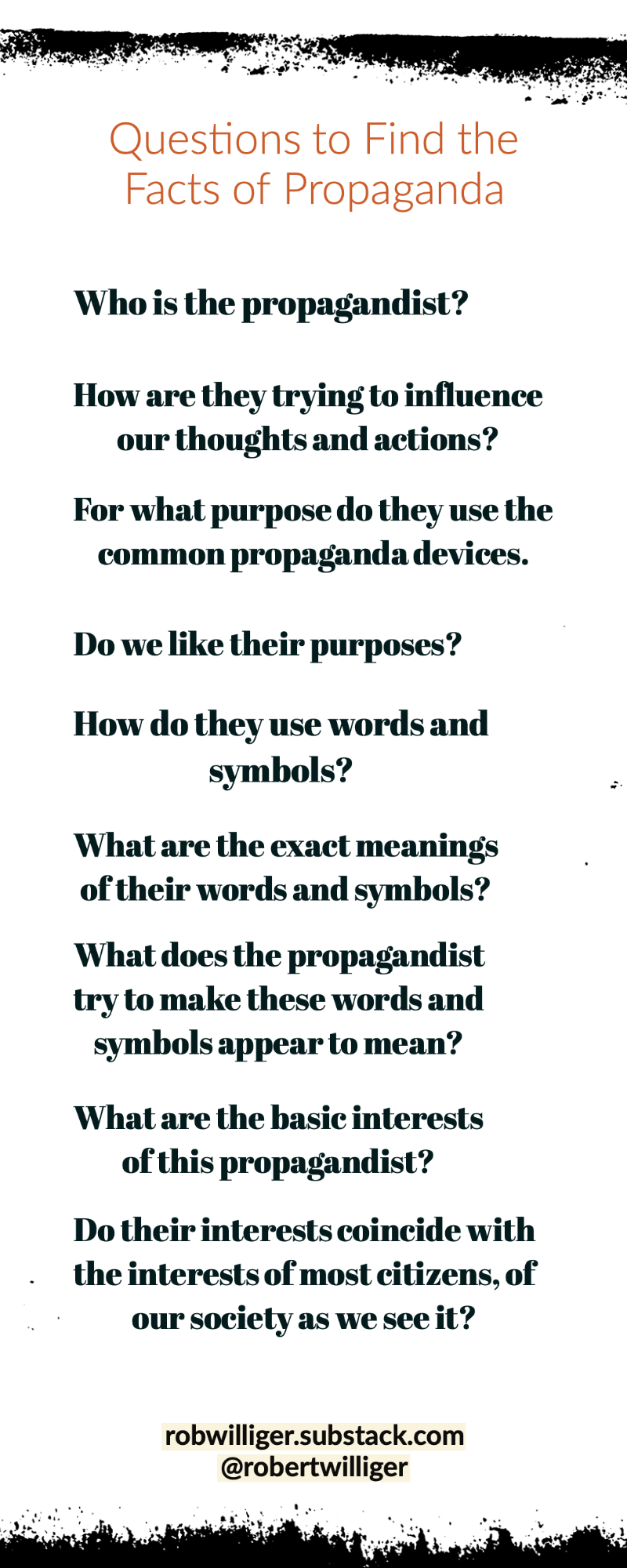
Guard always, finally, against omnibus words. They are the words that make us the easy dupes of propagandists. Omnibus or carryall words are words that are extraordinarily difficult to define. They carry all sorts of meanings to the various sorts of people.
The best test for the truth or falsity or propaganda lies in specific and concrete definitions of the words and symbols used by the propagandist. Sharp definition is the best antidote against words and symbols that carry a high charge of emotion.
This last point is extremely relevant to our current situation. While some of these steps are harder with how quickly information is coming at us compared to when this was written this is something we see with words like socialism and deep state.
They also identified seven tricks of the trade used by propagandists. While the means of spreading these have changed we still see these today.
The Tricks of the Trade are:
- Name Calling
- Glittering Generality
- Transfer
- Testimonial
- Plain Folks
- Card Stacking
- Band Wagon
Name Calling — giving an idea a bad label so that we reject and condemn the idea without examining the evidence.
Glittering Generality — associating something with a “virtue word” is used to make us accept and approve the thing without examining the evidence.
Transfer — carries the authority, sanction, and prestige of some respected to something else to make that thing acceptable. Or it can use authority, sanction, and disapproval to cause us to reject and disapprove something the propagandist would have us reject and disapprove.
Testimonial — would be having a respected or hated person say that a given idea, program, product, or person is good or bad.
Plain Folks — in this method the speaker attempts to convince his audience that he and his ideas are good because they are “of the people,” the “plain folks.”
Card Stacking — the selection and use of facts, falsehoods, illustrations, or distractions, and logical or illogical statements in order to give the best of the worst possible case for an idea, program, person, or product.
Band Wagon — with this scenario everybody, or at least all of us, is doing it, so the propagandist is trying to convince us that all members of a group to which we belong are accepting his program and that we must follow our crowd and “jump on the band wagon.”
Knowing these techniques can help us separate these portions of a message so that we can analyze the core idea and look at it on the merits. When you take away the tricks that they are using, ask yourself, what are they trying to sell us and is it something that we want.
I am sure as you read through the list you were able to picture examples of where you have seen these techniques in action. In future articles, I will go into the different techniques in more details and show where they are being used. Some of these techniques are easier to spot than others but the key element is to take a moment and analyze the information you are seeing.
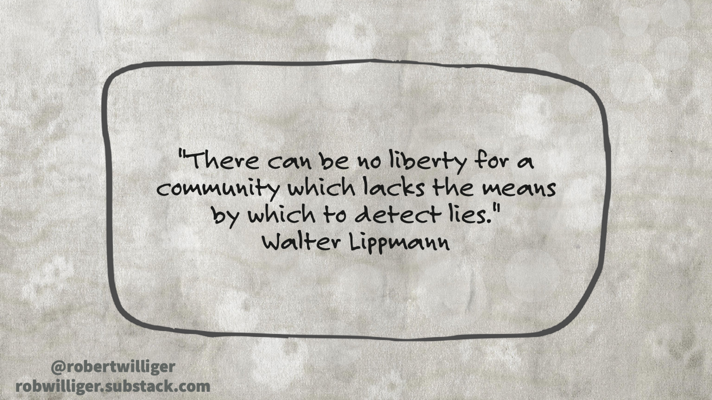
As Walter Lippmann said, “There can be no liberty for a community which lacks the means by which to detect lies.” The United States just saw great threats to the democracy on the basis of lies. Learning to detect propaganda and stopping the spread is something that everyone can do to help protect our democracy.
Below are some infographics to help you spread the word as the more people are familiar with propaganda techniques the stronger we all are.
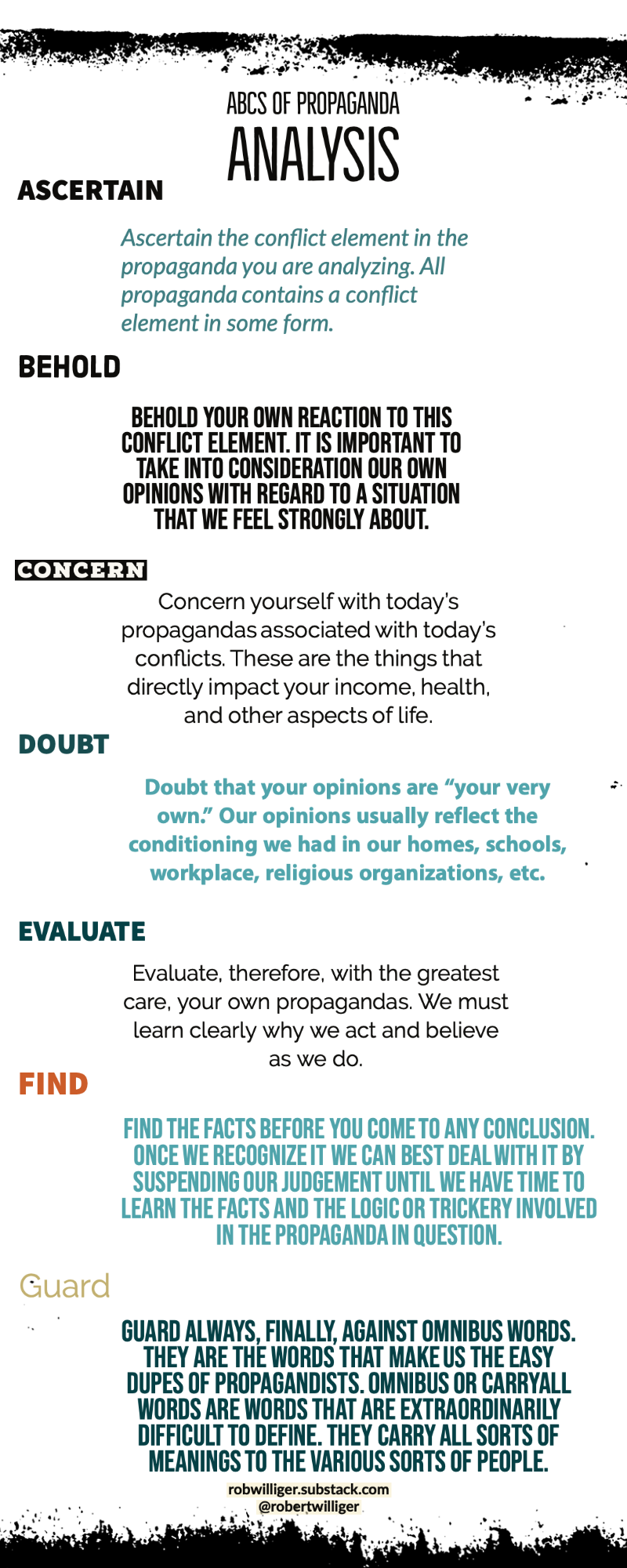
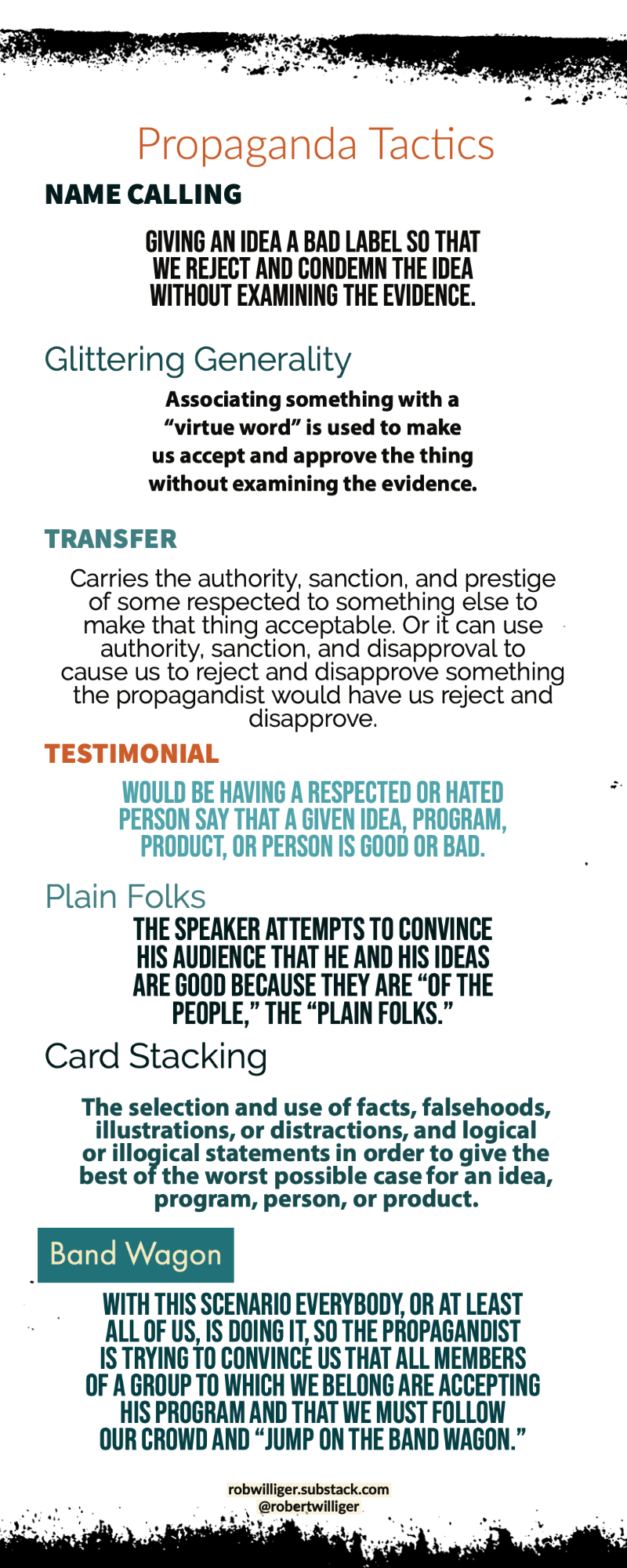
Lee, Alfred McClung, and Elizabeth Briant Lee. The Fine Art of Propaganda: A Study of Father Coughlin’s Speeches. Institute for Propaganda Analysis. New York: Harcourt, Brace and Co, 1939.